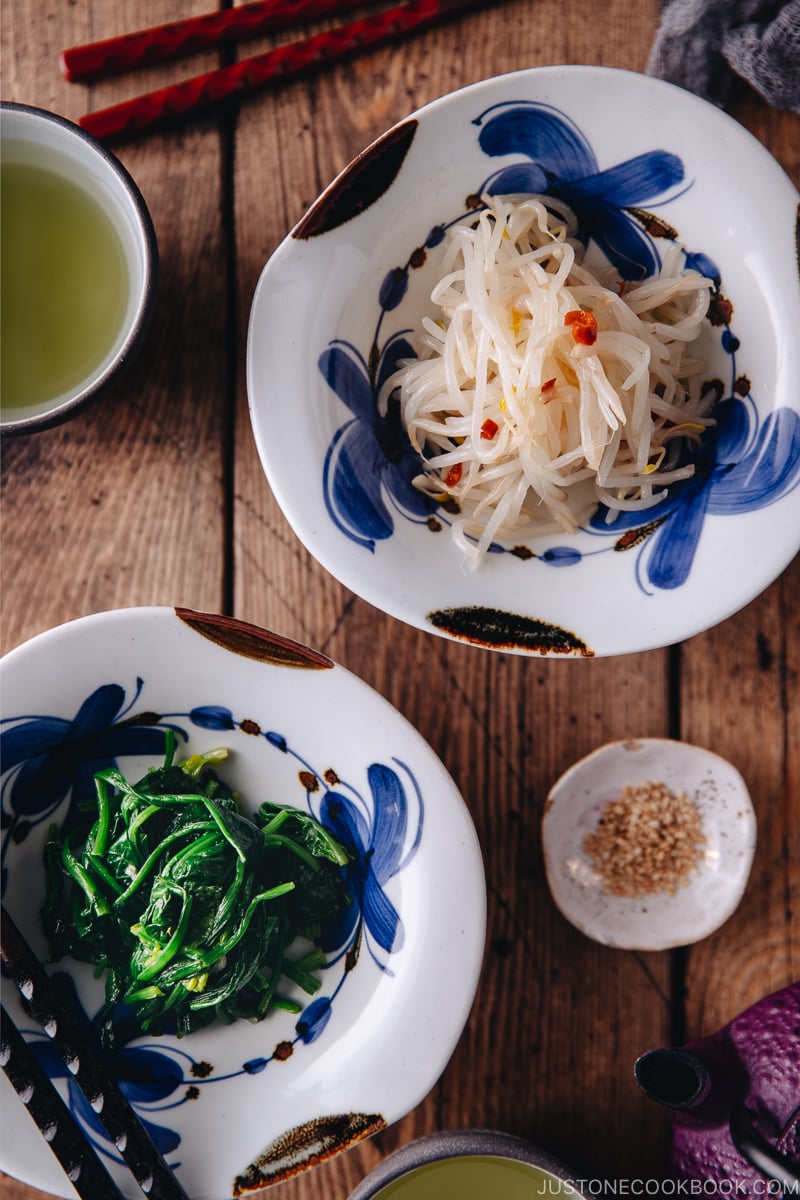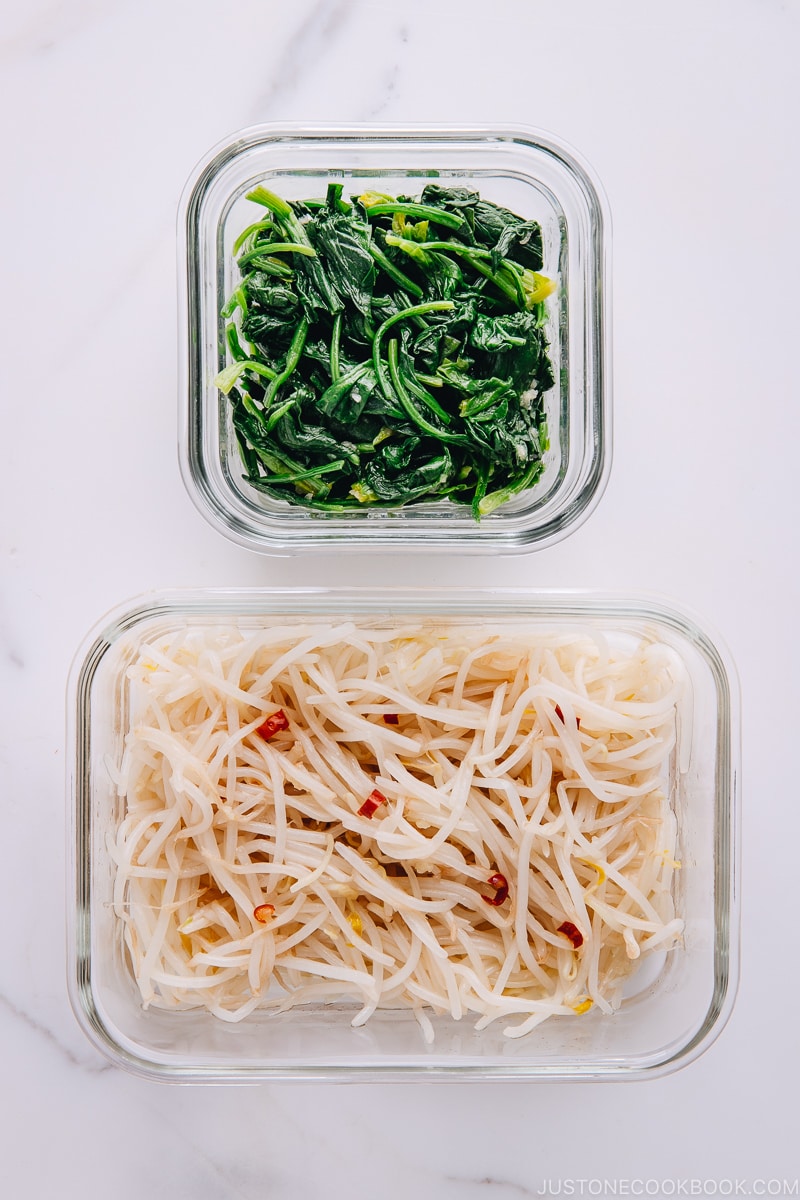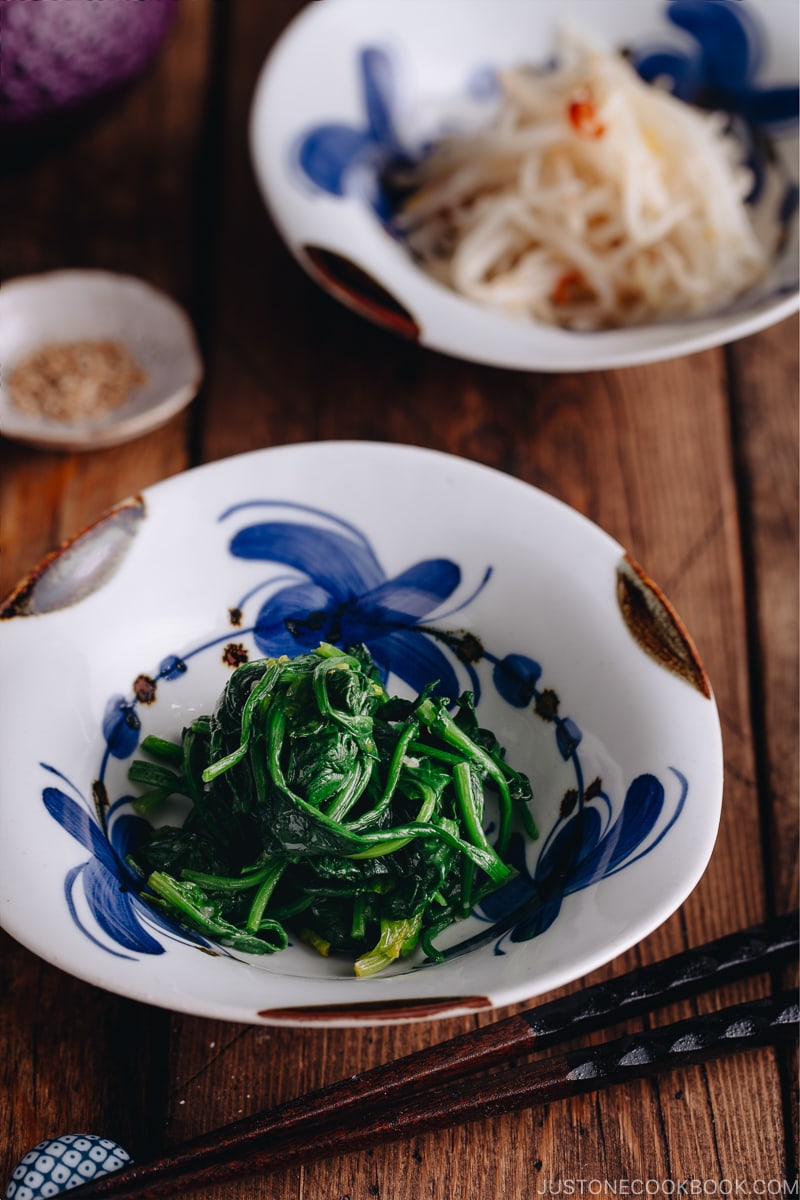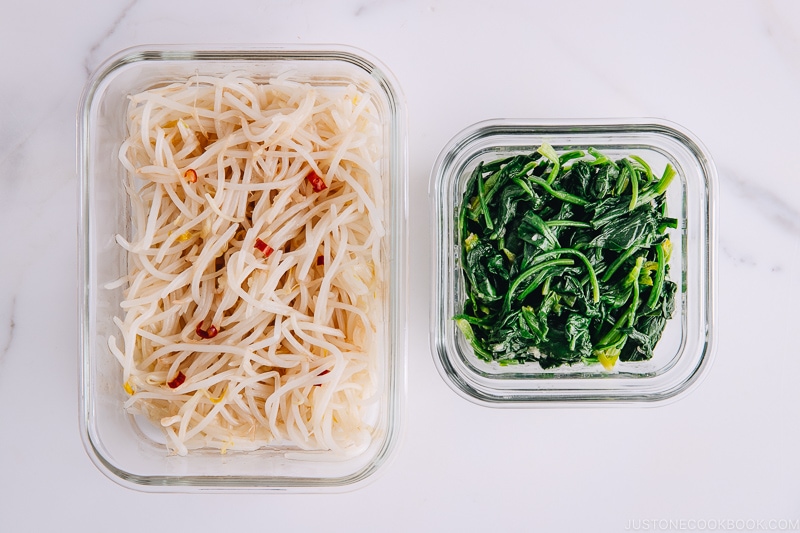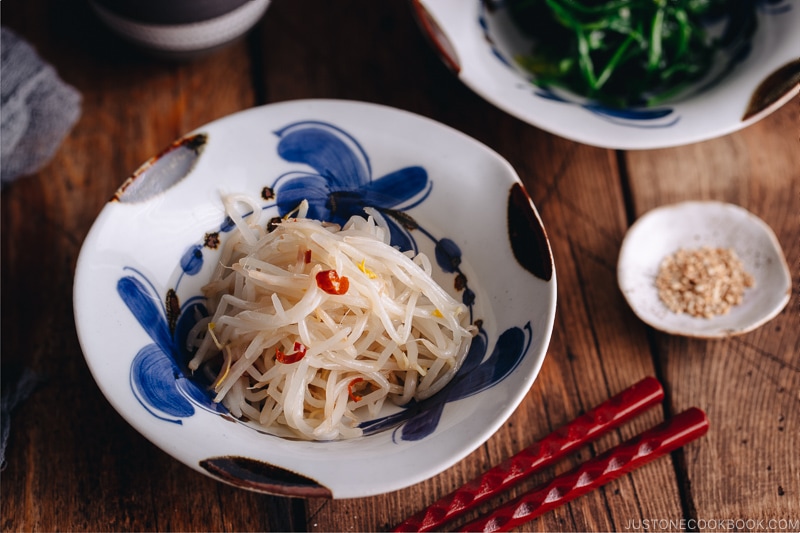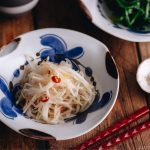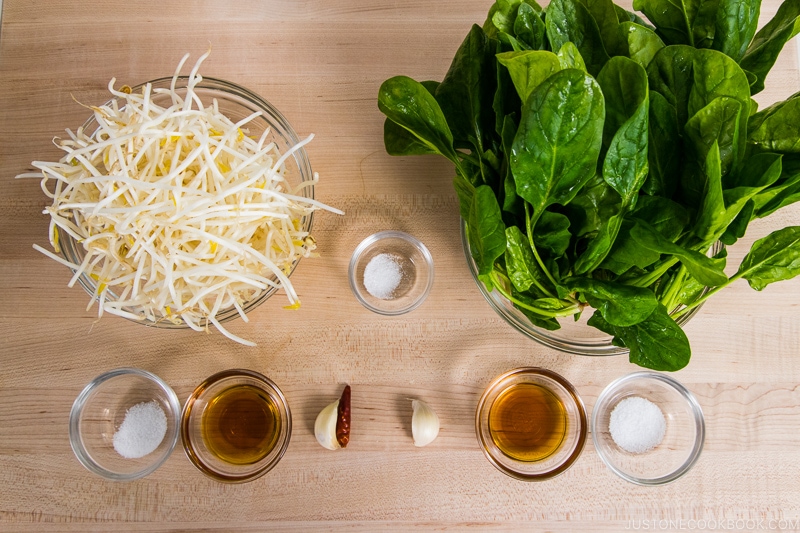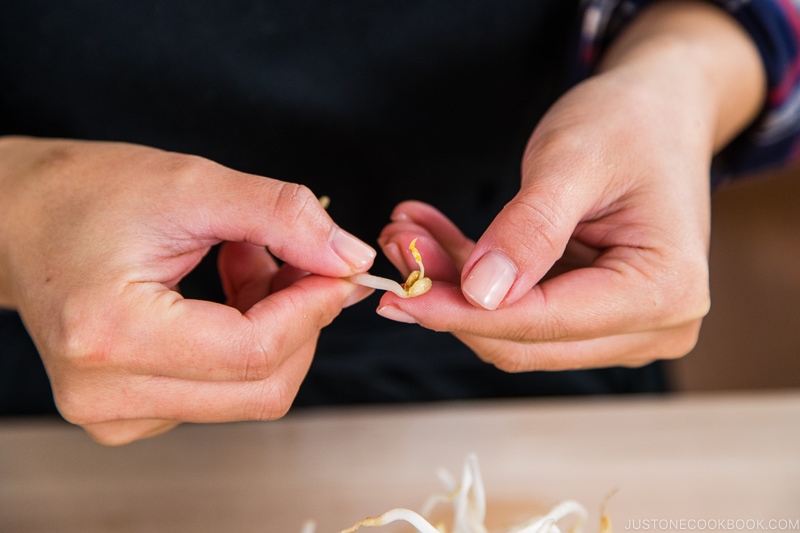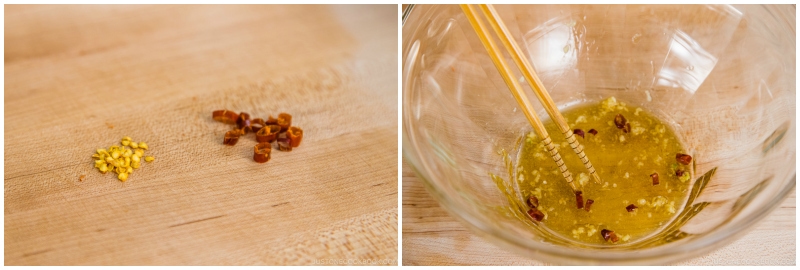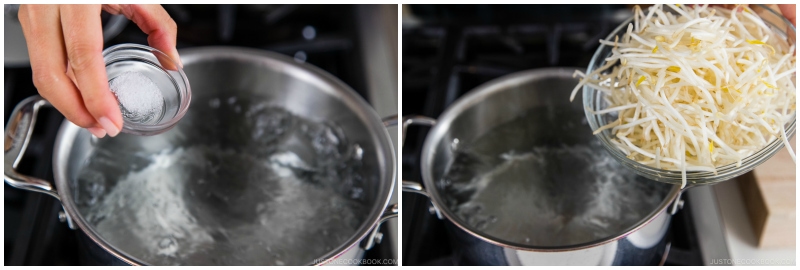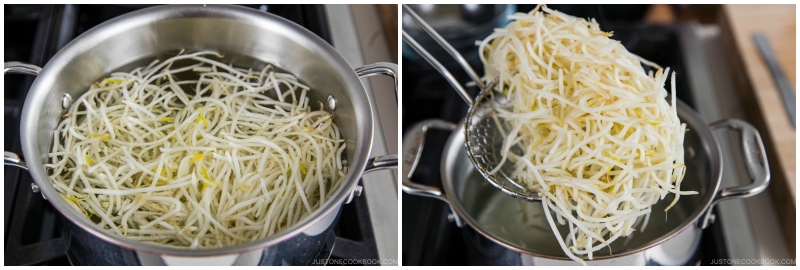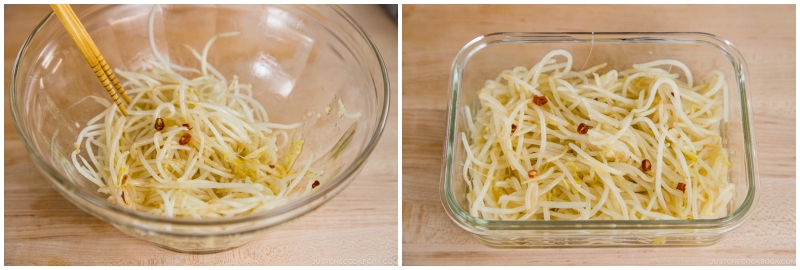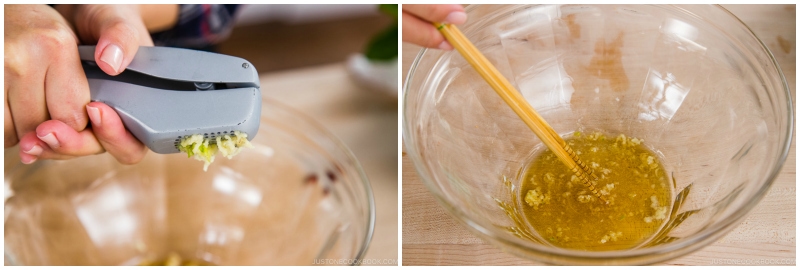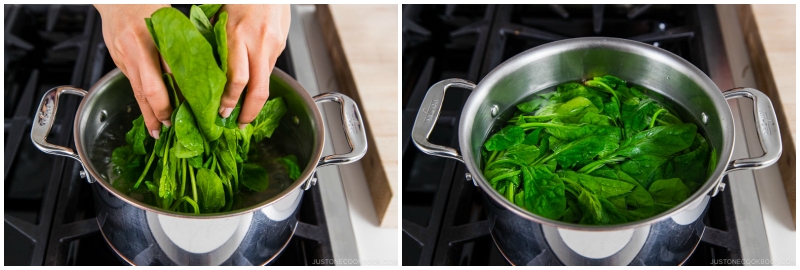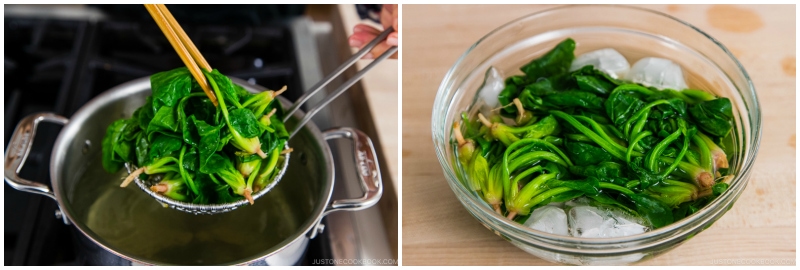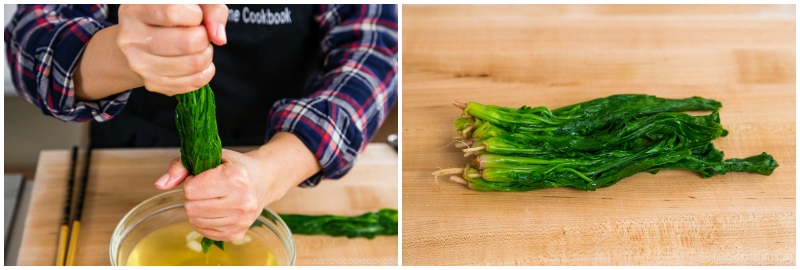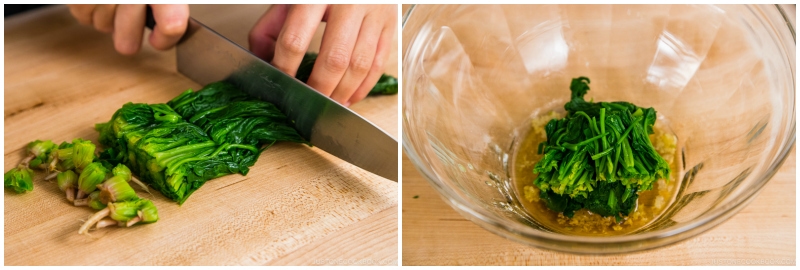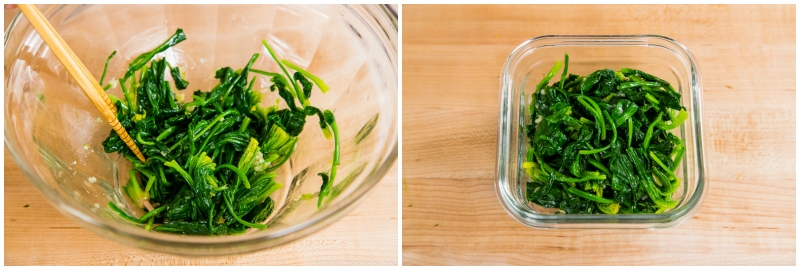Budget-friendly, quick to make, and delicious, these Korean side dishes called namul are the winners of meal prep in Japan. Almost every Japanese meal prep cookbook and online recipe include namul, which speak for their popularity in Japan. I personally love these seasoned side dishes because they are the best way to include vegetables in your everyday meal. They are also fresh-tasting with a slight crunch and incredibly aromatic from the fragrant sesame oil. Today, I’m featuring two of the most familiar namul recipes you often see on the table: Spinach Namul and Bean Sprout Namul.
What is Namul
Namul (나물) refers to a wide variety of Korean side dishes. The most common namul is made of blanched vegetables that are seasoned with salt, sesame oil, soy sauce, doenjang, gochujang, etc. In a typical Korean meal, you often see them served as part of a colorful array of sides, banchan (반찬), that complement the main meal, or as a component of bibimbap (Korean mixed rice). In Japan, we call it namuru (ナムル), a more direct translation of the original Korean vegetable side dish but pronounced in the Japanese way. We call spinach namul ‘horenso no namuru’ (ほうれん草のナムル) and bean sprout namul ‘moyashi no namuru’ (もやしのナムル).
Ingredients You’ll Need
These vegetable dishes require only 4-5 simple ingredients:
Vegetables — Bean sprouts (also known as mung bean sprouts or soybean sprouts) and spinach (I recommend using regular spinach for this dish. If you have to use boxed spinach, look for larger, mature spinach and avoid using baby spinach as it is too delicate). Sesame oil Salt — I use Diamond Crystal kosher salt Garlic Optional garnishes: Sesame seeds, green onion, dried chili pepper
Overview: How to Make Namul
Recipe Tips
How to Meal Prep & Store Namul
With the rise of Korean influence in Japanese cooking, these side dishes have quickly become popular in our daily meals. As home cooks have started to do meal prep more often in recent years, all kinds of namuru (namul) regularly appear as jobisai (常備菜), Japanese meal prep dishes. Both the spinach namul and bean sprout namul can be cooked in a big batch for use throughout the week or in bento menus. If you cook them on the same day, you can save time by using the same pot. Once they are cooked, set aside the portions you need and keep them in separate containers before storing them in the refrigerator. They can be kept well for up to 3-4 days. You can serve both namul dishes alongside each other to complement a bento lunch or with other sides you prefer.
Japanese Meal Prep (Jobisai 常備菜) Recipes
Bean Sprout Salad (Namul); prepared with the same method but with slightly different seasonings. Japanese Spinach Salad Seafood Salad Ramen Egg
Wish to learn more about Japanese cooking? Sign up for our free newsletter to receive cooking tips & recipe updates! And stay in touch with me on Facebook, Pinterest, YouTube, and Instagram.
